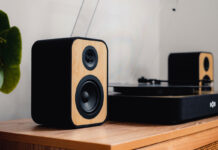
Raising a three-year-old is an adventure filled with laughter, learning, and endless energy. At this age, children are rapidly developing their cognitive, emotional, and motor skills. Selecting the right toys for your three-year-old can significantly enhance their learning experience while ensuring they have a great time. This article will guide you through 8 types of toys that are not only fun but also beneficial for your little one’s development.
1. Educational toys
Educational toys are indispensable in the developmental journey of three-year-olds. These toys are specifically designed to spark curiosity and encourage learning in a playful environment. As they begin to explore the world around them, these toys are designed to stimulate cognitive development, improve language skills, and enhance problem-solving abilities. They often involve numbers, letters, shapes, and colours, making learning a playful and engaging experience.
Examples include interactive books, counting games, and shape sorters. These toys lay the foundation for early literacy and numeracy skills, crucial for their upcoming school years.
2. LEGO and building blocks
LEGO and other building blocks are not just toys; they’re tools for creative expression and cognitive development. For a three-year-old, these toys are about exploring possibilities and bringing imagination to life. They learn the basics of construction, balance, and symmetry, all while honing their fine motor skills.
Building blocks can range from large, easy-to-handle blocks suitable for younger children to more complex LEGO sets that challenge them to follow instructions and create more intricate designs. This progression keeps the toys relevant and exciting as the child grows, providing a continuous learning curve.
3. Activity centre and pretend play

Gateways to a world of imagination, activity centres and pretend play toys often include miniature versions of real-life objects, like kitchens, tool kits, and medical kits, which allow children to role play and mimic the actions of adults. This type of play is crucial for developing social skills and understanding the world around them.
Pretend play also enhances language skills as children create dialogues and narratives, expanding their vocabulary and storytelling abilities. It encourages cooperation and turn-taking when playing with others, which are essential skills for social interaction.
4. Ride on toys
Ride-on toys are perfect for developing gross motor skills and coordination. At three years old, children are refining their balance and muscle control, and toys like tricycles, balance bikes, and foot-powered cars are excellent for this purpose. These toys also promote independence and confidence as children learn to steer and control their movements.
Plus, ride-on toys are a fun way to introduce safety rules and awareness of surroundings, laying the groundwork for future skills like cycling and driving.
5. Plush toys
Plush toys play a unique role in a child’s emotional and social development. Plushies often become beloved companions, offering comfort and a sense of security, which is crucial at this age when children begin to explore and understand their emotions. Through caring for plush toys, children develop nurturing skills too.
Playing with plush toys can also be a part of developing language skills. Children often talk to their plush toys, practicing new words and phrases, and sometimes these toys become central characters in their imaginative play.
6. Kids puzzles
Puzzles are excellent for cognitive development, particularly in problem-solving and logical thinking. For a three-year-old, completing a puzzle involves recognizing patterns, understanding piece placement, and developing hand-eye coordination. Puzzles can vary in complexity, from simple shapes and colours to more detailed scenes that challenge the child’s attention to detail.
Working on puzzles can also be a calm and focusing activity, helping children develop patience and persistence. Completing a puzzle gives a sense of achievement and pride, which is great for building self-esteem.
7. Board games
Designed to be simple yet engaging, board games for toddlers often involve basic counting, colour recognition, and simple decision-making, which are key skills for preschoolers. Games like Snakes and Ladders or Candy Land are excellent for teaching number recognition and counting skills.
Playing board games is also a social experience, helping children learn about taking turns, following rules, and being good sports. These early experiences with cooperative play are fundamental in developing social competence.
8. Dolls and toy cars

Dolls and toy cars are instrumental in fostering imaginative play and motor skills. Dolls allow children to role-play different scenarios, which is crucial in developing empathy, nurturing skills, and understanding social dynamics. Toy cars also spur children to create intricate scenarios and adventures, stimulating their creativity and narrative skills. This kind of imaginative play is also key in developing language skills, as children often talk to and create stories with their toy cars and dolls.
Plus, playing with dolls and toy cars can also refine a child’s fine motor skills and hand-eye coordination, as they learn to dress and care for the dolls, or maneuver and control the movement of the cars.
Find amazing toys for three-year-olds at Best Buy
Choosing the right toys for your three-year-old is about balancing fun and development. From educational toys to building blocks and board games, each type of toy offers unique opportunities for growth. These toys not only encourage creativity, and cognitive and motor skills development, but also foster emotional and social growth. The most effective toys will resonate with your child’s interests and developmental needs, making learning an enjoyable and enriching part of their daily play. Happy toy hunting!
This article was drafted using AI technology and then reviewed, fact-checked, and revised by a member of our editorial team.





